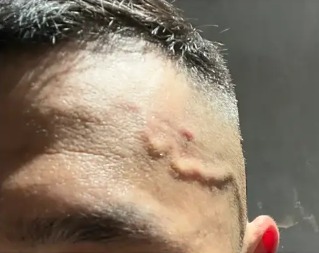
That familiar, unwelcome guest has returned: a deep, throbbing pain in your left temple. It pulses in time with your heartbeat, a relentless drumbeat of discomfort that can make it hard to concentrate or even keep your eyes open. It’s easy to write it off as “just a headache” and reach for the medicine cabinet. But what if that specific, rhythmic pain is more than just a nuisance? What if it’s a direct message from your circulatory system?
A throbbing pain in the temple, particularly on one side, is a classic hallmark of certain types of headaches, most notably migraines. But the connection to your cardiovascular health is profound and often overlooked. That throbbing you feel is the literal sensation of blood pulsing through the superficial temporal artery, a major blood vessel that runs just under the skin of your temple.
When this artery becomes inflamed, dilated, or is forced to handle a higher-than-normal pressure, it presses on surrounding nerves, creating that distinct pulsing pain. So, a throbbing left temple is often your body’s way of making an internal pressure visible—and felt.
While a throbbing temple can be a feature of a migraine without any blood pressure issues, it is also a significant red flag. Throbbing left temple? Your blood pressure might be dangerously high.
Here’s the connection between that localized throb and your systemic health.
The Direct Pressure Connection
High blood pressure, or hypertension, is often called the “silent killer” because it typically has no symptoms. However, when pressure reaches severely high levels (a condition known as a hypertensive crisis), it can indeed cause symptoms, and a pounding headache is one of the most common.
- The Mechanism: When your blood pressure spikes, the increased force of blood traveling through your arteries puts immense stress on their walls. The temporal artery is relatively superficial and close to sensitive nerves. The heightened pressure causes the artery to pulse more forcefully and can even cause it to dilate slightly, leading to that unmistakable, painful throbbing sensation against the nerve.
- The Warning Sign: A headache caused by a hypertensive crisis is often described as a severe, pulsating pain that feels like your head is pounding. It’s frequently felt in the temples or the back of the head. If this kind of headache comes on suddenly and is accompanied by vision changes, chest pain, nausea, or shortness of breath, it is a medical emergency, and you should seek immediate care.
The Migraine Connection: A Vicious Cycle
For those who suffer from migraines, the link is more complex but just as important. Migraines themselves are a neurological disorder, but they share a complicated relationship with blood pressure.
- A Triggering Factor: For some people, a sudden rise in blood pressure can be a direct trigger for a migraine attack, which then presents with classic throbbing temple pain.
- A Consequence of Pain: The intense pain and stress of a migraine can, in turn, cause your blood pressure to rise as part of your body’s stress response. This creates a vicious cycle where the headache and the high pressure feed off each other.
Other Causes of a Throbbing Temple
It’s important to note that not every throbbing temple means your blood pressure is high. Other serious conditions can cause similar symptoms:
- Giant Cell Arteritis (Temporal Arteritis): This is an inflammatory condition of the arteries, most commonly the temporal arteries. It causes a severe, throbbing headache, often in the temple, along with tenderness of the scalp, jaw pain while chewing, and sometimes vision problems. This is a medical emergency requiring prompt treatment to prevent blindness.
- Trigeminal Neuralgia: This involves a misfiring of the trigeminal nerve, causing brief but excruciating, electric-shock-like pains in the face, which can be felt in the temple.
What to Do When You Feel the Throb
- Don’t Just Mask the Pain. Taking an over-the-counter pain reliever may help the symptom, but it ignores the potential cause.
- Check Your Blood Pressure. If you have a home monitor, check it during a headache. If you don’t have one, many pharmacies have free machines. Note the reading. Is it significantly higher than your baseline?
- See Your Doctor. Describe your symptoms in detail: “I get a throbbing pain specifically in my left temple, and it pulses with my heartbeat.” Your doctor can help determine if it’s a migraine, a tension headache, or something related to your blood pressure.
- Track Your Headaches. Keep a log of when they occur, their intensity, and any potential triggers (stress, certain foods, lack of sleep). This information is invaluable for your doctor.
A throbbing left temple is your body’s way of tapping you on the shoulder—sometimes quite forcefully. It’s a signal that the pressure in your delicate circulatory system may be reaching a tipping point. By listening to this signal and investigating its root cause, you’re not just seeking relief from pain; you’re taking a critical step toward protecting your heart, your brain, and your long-term health.